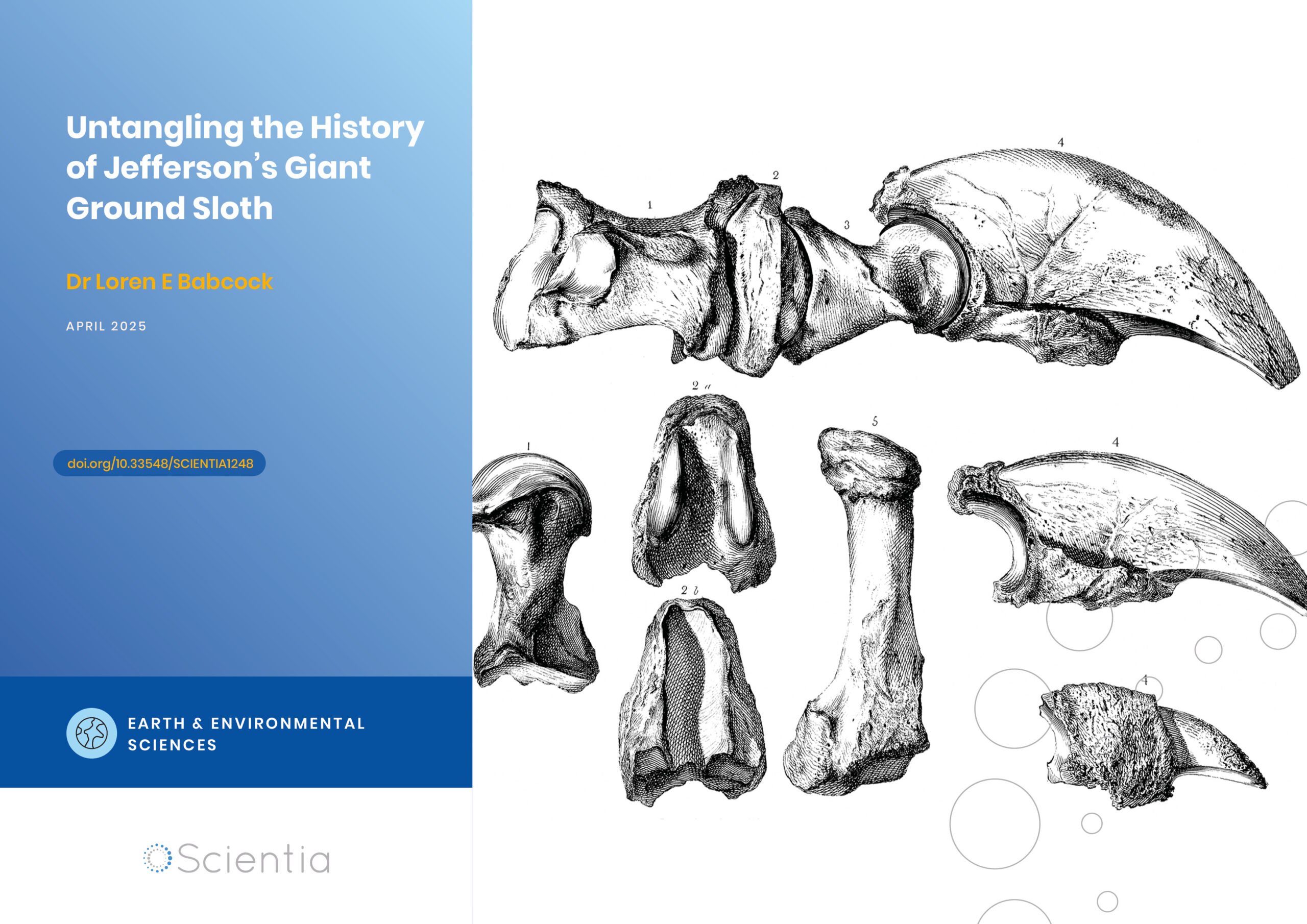Dr Ghada Koleilat – A Career of Breakthroughs in Advanced Materials
Solution-processed nanomaterials, such as quantum dots, are some of the most exciting and widely studied materials in nanotechnology today, but reaching this point has been no easy task for scientists. From the very start of her career, Dr Ghada Koleilat, now an Assistant Professor at Dalhousie University in Canada, has been a renowned pioneer in this field – devising innovative new solutions to some of nanotechnology’s most pressing questions. Her numerous breakthroughs have brought about some profound new ways of thinking in one of the most rapidly developing energy generation technologies in the modern world: solar cells.
Quantum Dots
Some of the most ubiquitous elements of today’s technological devices are materials named semiconductors, whose conductive properties fall in between those of conductors and insulators. In recent years, researchers worldwide have aimed to push the capabilities of these materials ever higher.
To date, one of their most cutting-edge developments are semiconductors scaled down to just a few atoms across – so small that the intriguing effects of quantum mechanics become relevant in governing their behaviours. Known as ‘quantum dots’, these nanoscale semiconductors, whose behaviours strongly mimic those of individual atoms, are now widely studied in the field of nanotechnology, particularly relating to how they interact with light.
When illuminated by ultraviolet light, one of the electrons in a quantum dot will jump from its insulating, or ‘valence’ band, into its conducting band. As it jumps back to the valence band, this electron will then emit a particle of light – a photon – whose colour directly depends on the difference in energy between the two bands.
Yet despite the numerous advantages of this property, many challenges remain before quantum dots can be fully exploited. For instance, when they are exposed to air, today’s quantum dots will typically break down within just a few minutes, significantly limiting their prospects for use in modern technologies.
Redesigning Production
Straight after finishing her undergraduate degree in electrical engineering, Dr Ghada Koleilat committed her research to tackling this challenge head-on. Through a graduate project at the University of Toronto, she did this by exploring the chemical processes that unfold as quantum dots are produced. Through her results, published in the journal ACS Nano in 2008, she proposed that the inconveniently short lifetimes of quantum dots stem from the use of organic molecules named ligands in their production process. These ligands bind to a central metal atom, and allow quantum dots to become evenly dispersed throughout a mixture.
Dr Koleilat needed to devise an entirely new way to process quantum dots from scratch. After becoming well acquainted with a wide array of manufacturing techniques, she succeeded in designing and creating quantum dots with far longer lifespans than had ever been achieved previously – while maintaining their even dispersion.
This technology has been licenced to the semiconductor production company, InVisage Technologies, now owned by Apple. Dr Koleilat’s advanced quantum dots are now the core of the manufacturing techniques used by the company and will soon provide a basis for a new range of phone cameras, set to enter production in the near future.

Pushing the Limits of Solar Cells
Today, perhaps the most widely explored application of quantum dots are solar cells – one of the most promising and rapidly evolving forms of renewable energy currently available. Typically, solar cells operate using the photovoltaic effect, in which photons of sunlight excite the electrons in semiconductor materials to the conducting band, where they can move freely. Once in the conduction band, these electrons can travel around a circuit towards a positively charged part of the cell, creating a flow of electricity that can be harvested.
Today, conventional solar cells require semiconductor materials that contain just the right mixtures of impurities to output as much electricity as possible. Yet through her research, Dr Koleilat shows that materials hosting evenly dispersed mixtures of quantum dots could be better suited to this task. Since the gaps between the conducting and valence bands in quantum dots are easily tuneable in the manufacturing process, they are ideal for efficiently generating electricity from sunlight. To ensure optimal performance, however, their compositions must be meticulously engineered.
Integrated Quantum Dots
Following her initial work with quantum dots, Dr Koleilat embarked on her PhD project, in which she explored the possibility of a wider usage of quantum dots in solar cell manufacture. Funded by Canada’s Natural Sciences and Engineering Research Council (NSERC), she developed and patented the world’s first solar cell in which materials containing long-lived, evenly-suspended quantum dots were used in conjunction with other semiconductor materials. Through collaboration with industries including Oerlikon Solar, she was able to integrate her quantum dots into existing silicon-based technologies, providing the ideal platform for these ‘tandem’ cells.
Through results published in Nano Letters in 2012, Dr Koleilat reported a greatly enhanced performance in tandem solar cell materials when impurities at precisely the right concentrations were introduced. Furthermore, her contribution to a study published in ACS Applied Materials in 2011 was instrumental in developing a device that converted over 3% of incoming sunlight into electricity – which was great performance for a solar cell based on quantum dots at the time. Both of these studies were widely hailed as major breakthroughs for the use of quantum dots in solar cell manufacturing, attracting praise from media groups including the National Post and MIT’s Technology Review.

Record-breaking Performance
At the same time as this project, Dr Koleilat worked on new techniques for integrating her tandem solar cells into realistic power supply systems, paying particular attention to the composition of their constituent electrodes – the terminals that connect the solar cell to the electric circuit.
After a design had been perfected through computer modelling, the work resulted in a two-layer electrode – the first of which had a high concentration of impurities added, and supplied a high density of free electrons to an ultra-thin second layer of titanium dioxide. When integrated into a quantum dot solar cell by another student, Dr Koleilat’s design achieved a record-breaking energy conversion efficiency of 8.5%.
In another study, published in Scientific Reports in 2013, Dr Koleilat explored the properties of quantum dots in a novel photovoltaic device design – a setup previously regarded as ineffective for realising efficient solar cells. Through her approach, however, Dr Koleilat enhanced the overall energy conversion efficiency by 30% compared with previous attempts.
Through each of these numerous and significant breakthroughs, Dr Koleilat has clearly demonstrated her prowess in developing innovative techniques for the integration of quantum dots into solar cells. Yet in her next few projects, she would demonstrate that her skills translate to an even broader range of technologies.
Sorting Carbon Nanotubes
After completing her PhD, Dr Koleilat began to explore further approaches to improving solar cell performance beyond quantum dots, through postdoctoral work at Stanford University. This time, her research focused on semiconducting carbon nanotubes – arrangements of carbon atoms wrapped into tubes just a few atoms thick.
In theory, these structures can improve energy conversion efficiency in similar ways to specialised dyes that are already widely used, and are known to significantly improve solar cell performance when placed between the layers of tandem cells. Yet to achieve the same effect with carbon nanotubes, they must be precisely sorted – no easy task for such tiny structures.
Through research published in ACS Nano in 2014, Dr Koleilat and her colleagues devised yet another new technique for optimally sorting nanotubes in this way, which enabled extremely high yields of the structures. At the same time, her experiments brought about new discoveries regarding the transport of electrons across dual layers of nanotubes, providing researchers with new insights into how performance could be boosted even further.

Improving Perovskite Crystals
Following this work, Dr Koleilat investigated yet another approach to enhancing solar cell efficiency, involving thin films of a specialised composition – named ‘perovskite’. When thin films of the material were deposited on top of existing solar cells in previous studies, researchers found that their electrical properties could be greatly enhanced. Dr Koleilat is now aiming to improve these properties even further, enabling perovskite films of only around 500 nanometres to 1 micrometre thick to be precisely deposited onto the surfaces of solar cells, to greatly enhance their performance at little cost to the manufacturer.
In her technique, reported in ACS Photonics, a thin film of perovskite is continuously blade-coated onto a moving surface. As it spreads, the perovskite film is smoothed out by a blade, to create a uniform film, creating macroscopic crystals with enhanced electrical properties. Like her previous breakthroughs, Dr Koleilat believes this blade-coating approach has the potential to transform the solar cell industry. However, several challenges remain before the technique can become widely commercialised.
Aims for the Future
Currently, the type of specialised perovskite used by Dr Koleilat quickly breaks down when exposed to air. Therefore, she now aims to find new ways to develop scalable, stable, and highly efficient devices incorporating the material, which are suitable for widespread integration into modern technologies. Having maintained a rapid pace of ground-breaking discoveries for over a decade, Dr Koleilat and the research team she now leads at Dalhousie University are in a stronger position than ever to realise these goals.
This work promises to strengthen the position of solar energy as one of the most advanced forms of electricity generation available. As renewable energy becomes an increasingly important aspect of the global energy generation mix, and the global fight against climate change gains momentum, Dr Koleilat’s discoveries come at a critical time, and may soon prove to hasten our migration away from fossil fuels.
Reference
https://doi.org/10.33548/SCIENTIA522
Meet the researcher

Dr Ghada Koleilat
Department of Electrical and Computer Engineering
Dalhousie University
Halifax, Nova Scotia
Canada
Dr Ghada Koleilat completed her PhD in Electrical Engineering at the University of Toronto in 2012. Before graduating, she pioneered the use of quantum dots in solar cell manufacture, greatly improving their electrical properties. This technology is now patented and licenced to InVisage Technologies Inc. Upon completing her PhD, Dr Koleilat then embarked on her postdoctoral training at Stanford University, where she explored the potential use of carbon nanotubes in solar cells. Following this work, Dr Koleilat joined Dalhousie University as an Assistant Professor in 2016. She now leads the Koleilat Research Group at the university, which investigates the properties of advanced materials for use in advanced energy conversion technologies.
CONTACT
E: Ghada.Koleilat@dal.ca
W: https://www.koleilatresearchgroup.com/
KEY COLLABORATORS
Prof. Ian Hill, Department of Physics and Atmospheric Science, Dalhousie University
Prof. Craig Bennet, Department of Physics, Acadia University
Prof. Melanie Chiu, Chemistry Department, Stony Brook University
Aurea Technologies
FUNDING
NSERC Discovery Grant
New Frontiers in Research Fund (Exploration-stream)
Canadian Foundation for Innovation
FURTHER READING
MM Hasan, C Clegg, M Manning, A El Ghanam, C Su, M Harding, JC Bennett, IG Hill, GI Koleilat, Stable Efficient Methylammonium Lead Iodide Thin Film Photodetectors with Highly Oriented Millimeter-Sized Crystal Grains, ACS Photonics, 2020, 7, 57.
GI Koleilat, L Levina, H Shukla, SH Myrskog, S Hinds, A G Pattantyus-Abraham, EH Sargent, Efficient, stable infrared photovoltaics based on solution-cast colloidal quantum dots, ACS Nano, 2008, 2, 833.
GI Koleilat, X Wang, EH Sargent, Graded recombination layers for multijunction photovoltaics, Nano Letters, 2012, 12, 3043.
X Wang, GI Koleilat, A Fischer, J Tang, R Debnath, L Levina, E H Sargent, Enhanced open-circuit voltage in visible quantum dot photovoltaics by engineering of carrier-collecting electrodes, ACS Applied Material Interfaces, 2011, 3, 3792.
GI Koleilat, IJ Kramer, CTO Wong, SM Thon, AJ Labelle, S Hoogland, EH Sargent, Folded-Light-Path Colloidal Quantum Dot Solar Cells, Scientific Reports, 2013, 3.
GI Koleilat, X Wang, AJ Labelle, AH Ip, GH Carey, A Fischer, L Levina, L Brzozowski, EH Sargent, A donor-supply electrode (DSE) for colloidal quantum dot photovoltaics, Nano Letters, 2011, 11, 5173.
H Wang, GI Koleilat, P Liu, G Jiménez-Osés, Y-C Lai, M Vosgueritchian, Y Fang, S Park, KN Houk, Z Bao, High-Yield Sorting of Small-Diameter Carbon Nanotubes for Solar Cells and Transistors, ACS Nano, 2014, 8, 2609.

Want to republish our articles?
We encourage all formats of sharing and republishing of our articles. Whether you want to host on your website, publication or blog, we welcome this. Find out more
Creative Commons Licence
(CC BY 4.0)
This work is licensed under a Creative Commons Attribution 4.0 International License. 
What does this mean?
Share: You can copy and redistribute the material in any medium or format
Adapt: You can change, and build upon the material for any purpose, even commercially.
Credit: You must give appropriate credit, provide a link to the license, and indicate if changes were made.
More articles you may like
Calculating Steering Friction: Essential Engineering for Military Aircraft Safety
The safe operation of military training aircraft depends on precise engineering calculations that most of us never consider. Dr Bogdan Adrian Nicolin and Dr Ilie Nicolin from the National Institute for Aerospace Research in Romania have developed sophisticated methods to calculate the steering friction moment in military aircraft. This critical engineering parameter ensures that pilots can safely control aircraft during taxiing, take-off, and landing – making their work essential for both pilot training and flight safety.
Professor Robert B Heimann | Culinary Craftmanship: The Evolution of Pottery for Cooking
Cooking food is arguably one of the most important transitions in human evolution, and initiated hundreds of thousands of years of refinement in both technique and technology. Professor Emeritus Robert B Heimann of TU Bergakademie Freiberg, Germany, recently reviewed the evidence for early cooking vessels and tracks the evolution of their production, identifying important strategies of optimisation using various natural materials, firing methods, and designs to improve durability, functionality, and efficiency over time.
Dr Loren Babcock | Untangling the History of Jefferson’s Giant Ground Sloth
In the spring of 1796, workers mining saltpetre in a western Virginia cave unearthed several unusual bones. This would launch the scientific study of extinct animals in North America and connect one of America’s founding fathers to the early development of palaeontology. Some of these mysterious bones eventually made their way to future US President Thomas Jefferson at his Monticello estate. Dr Loren Babcock from The Ohio State University’s School of Earth Sciences has conducted an extensive review of the complex naming history of this iconic extinct animal. His research untangles over 200 years of inconsistent scientific terminology and establishes the definitive nomenclatural history of what would become known as Megalonyx jeffersonii.
Epigenetic Mysteries Unravelled: The Zinc-Finger Proteins
Exploring the complex mechanisms of cell development processes and DNA structure is critical to understanding how certain diseases, such as cancer, can arise. Professor Danny Reinberg and Dr Havva Ortabozkoyun from the University of Miami in Florida, USA, work to reveal the epigenetic mechanisms at play during cell division and development and, in turn, disease processes. Together, they are discovering new protein molecules involved in genome organisation, deepening our understanding of how cancers and other related conditions can develop.




